Middle Eastern vegetable bulgur pilaf is brimming with veggies, quick-cooking bulgur wheat, and the distinctive flavor of warming Baharat spice blend for a healthy main dish made with wholesome ingredients and no added oil.
Not familiar with Baharat? No worries, I've got a homemade recipe below.
Bulgur, cracked wheat, is the whole grain featured in many of my favorite recipes, including mock PF Chang's lettuce wraps, stuffed butternut squash, red lentil Mujadara, and vegan kofta. This bulgur with vegetables recipe is one of the easiest and most versatile yet!
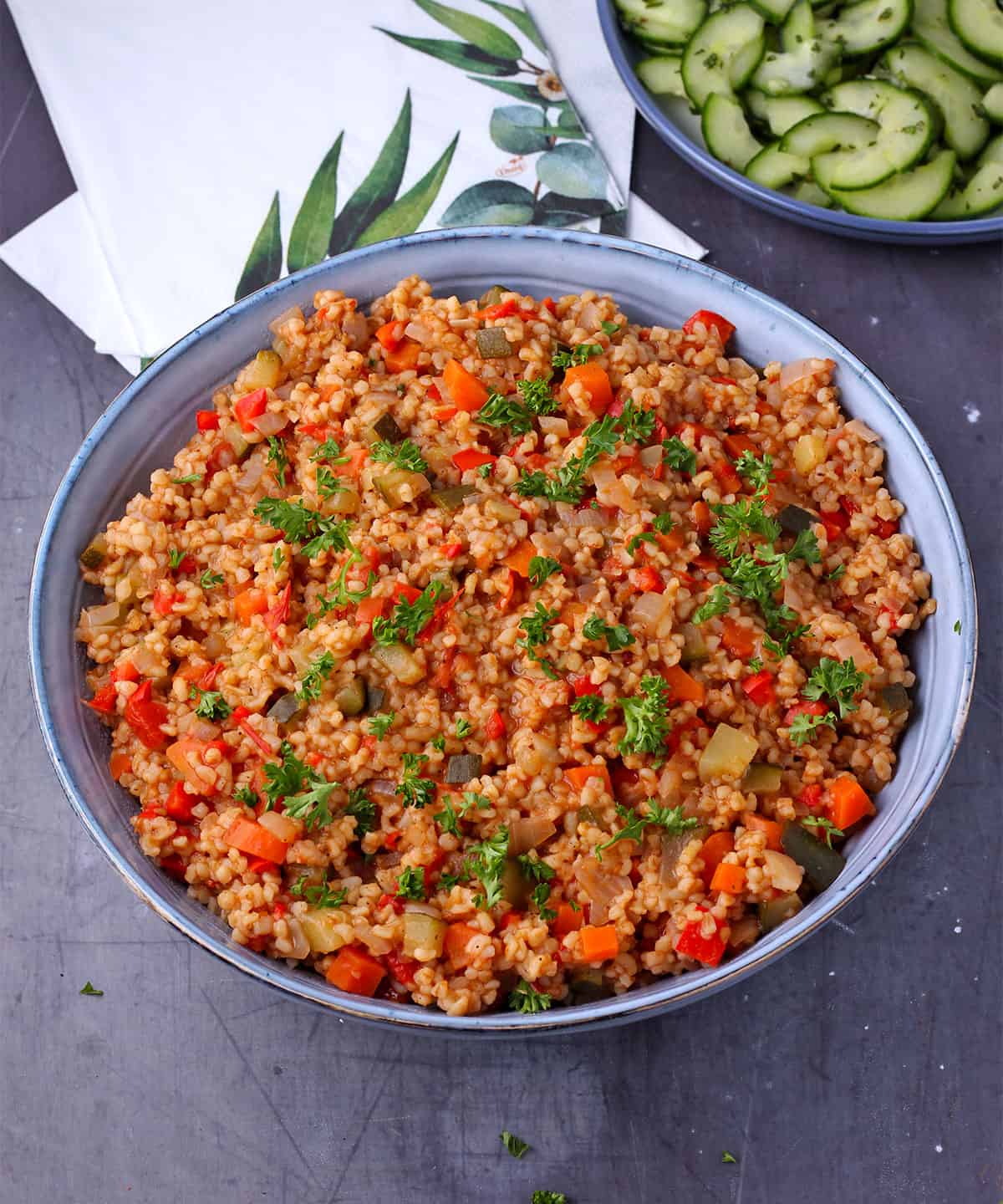
Table of Contents
Why You'll Love This Recipe
- Easy one-pot cooking process that takes about half the time of rice pilaf.
- A great recipe for using leftover or frozen veggies.
- A cup of bulgur pilaf makes the perfect side dish.
Ingredients, Notes, and Substitutions
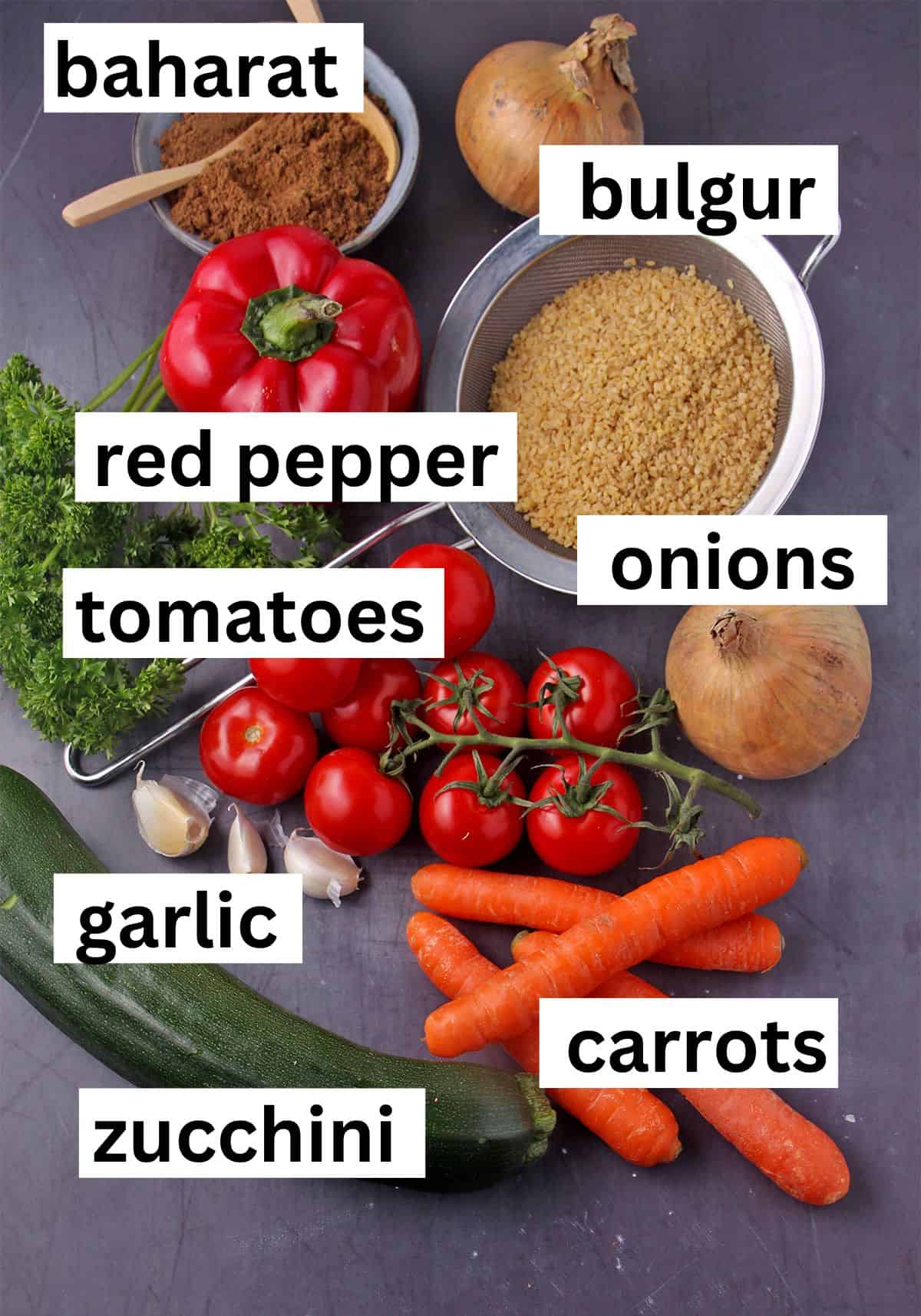
Bulgur. There are four different types of bulgur. I recommend medium or coarse bulgur for this bulgur pilaf recipe. Fine bulgur looks and behaves like couscous. Coarse or medium bulgur looks like golden brown rice and has a chewy texture and nutty flavor that won't get lost in the veggies. Extra coarse bulgur has larger grains and will take a little longer to cook.
Baharat. Complex, warming, and slightly sweet baharat seasoning mix is a Middle Eastern 7-spice blend that you can find at the grocery store or specialty shops. You can also make a homemade blend following my quick recipe featured below.
Vegetable broth. Broth or vegetable stock adds more flavor than water (which you can also use). Vegan chicken broth is another great option.
Tomatoes. Fresh tomatoes add flavor without overwhelming the flavor. For more tomato flavor, use a tablespoon of tomato paste. You can substitute with a can of diced tomatoes, although the tomato flavor will be more pronounced.
Please see the recipe card at the bottom of this post for the complete list of ingredients with measurements plus recipe instructions.
Recipe Variations
- Middle Eastern countries and regions have their own versions of bulgur pilaf. Turkish bulgur pilaf has more tomato flavor and uses green bell peppers. Baharat seasoning is my own take on a Lebanese version.
- Bulgur is high in protein, but chickpeas (garbanzo beans) are your best bet if you want more. Add them to the cooking pot before or after the bulgur cooks.
- One of my favorite ways to make a quick lunch is a version of this bulgur recipe using a few cups of frozen veggies.
Homemade Baharat Spice Recipe
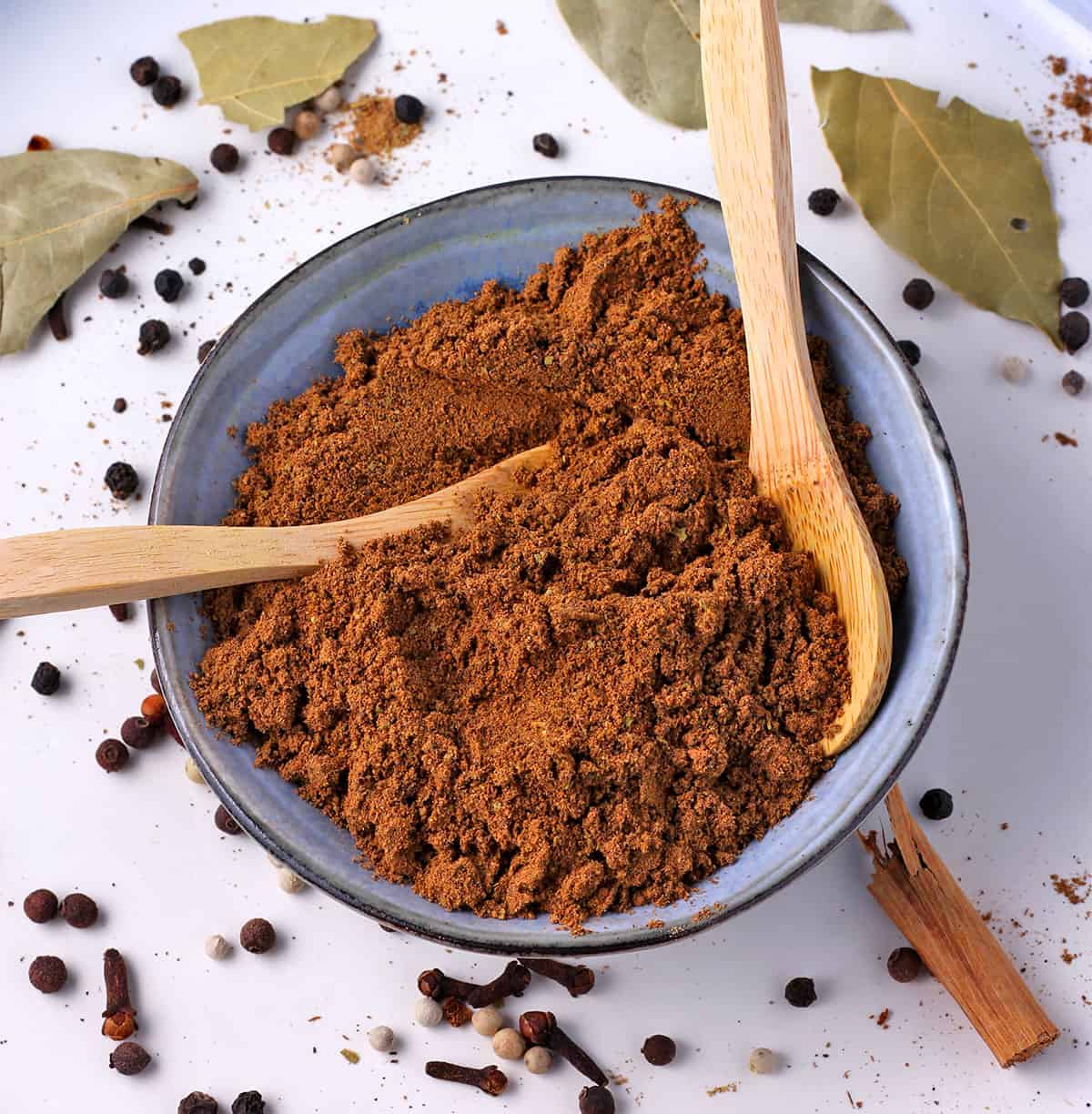
This is the spice mix I use. Add all the ingredients to a spice or clean coffee grinder and blend to a fine powder.
- ¼ cup crumbled bay leaves (about 6 - 8 leaves)
- 2 ½ teaspoons ground ginger
- 1 ¾ teaspoons ground cinnamon (2 ½ cinnamon sticks)
- 2 teaspoons ground nutmeg
- 1 ¾ teaspoons ground cloves (2 ½ teaspoons whole cloves)
- 3 teaspoons ground allspice
- 3 teaspoons black peppercorns (1 ½ ground black pepper)
- 1 ½ teaspoons ground cardamom
You'll end up with way more than you need for this recipe. Store it in a jar with a lid and keep it in your spice cabinet for next time.
Step-by-Step Instructions
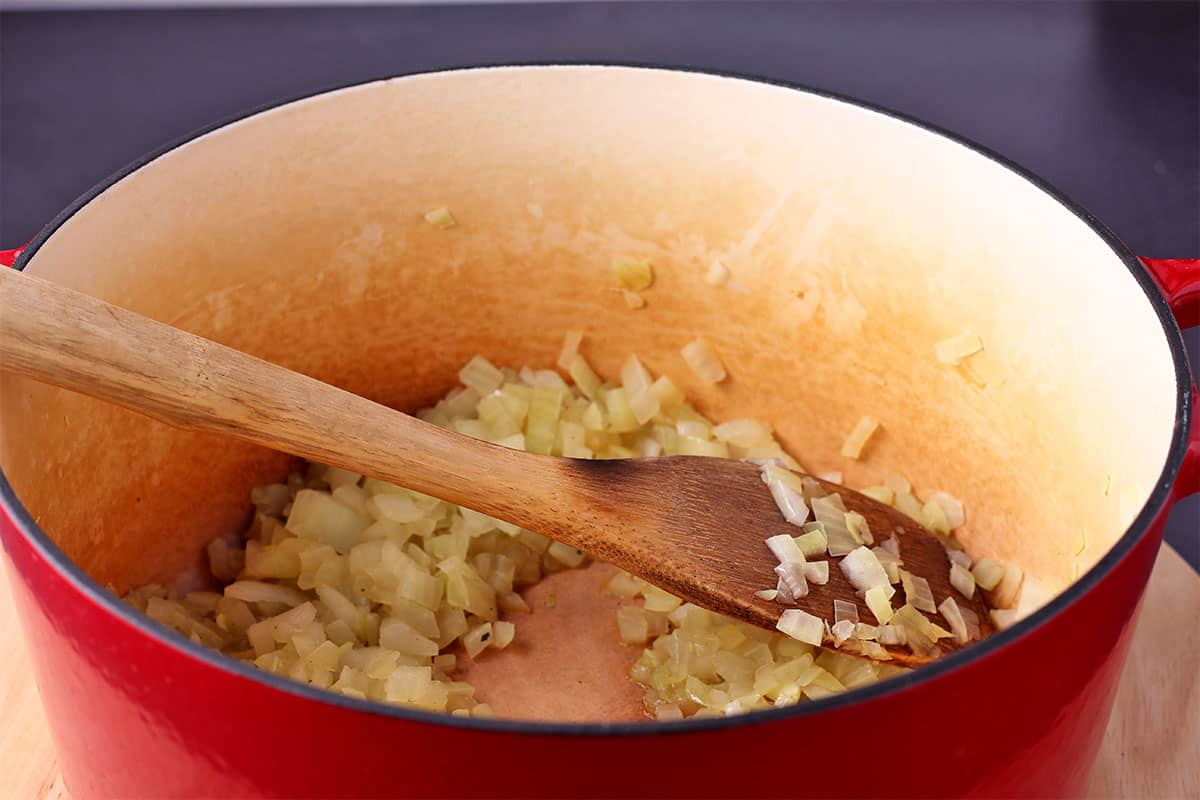
Step 1: Heat a large pot or Dutch oven over medium heat. Add the diced onions and cook them for 2-3 minutes until they soften. Then add the garlic.
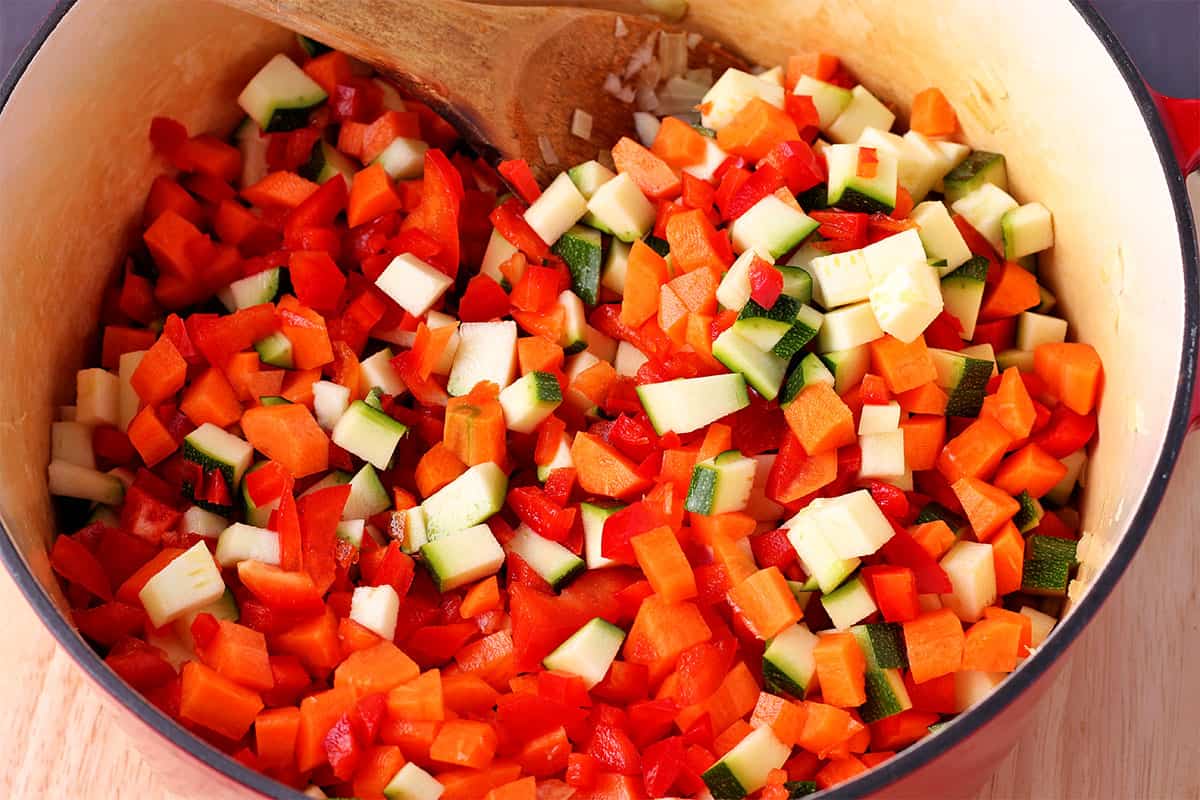
Step 2: Stir in the carrots, zucchini, and red pepper. Cook for another 5 minutes, stirring frequently.
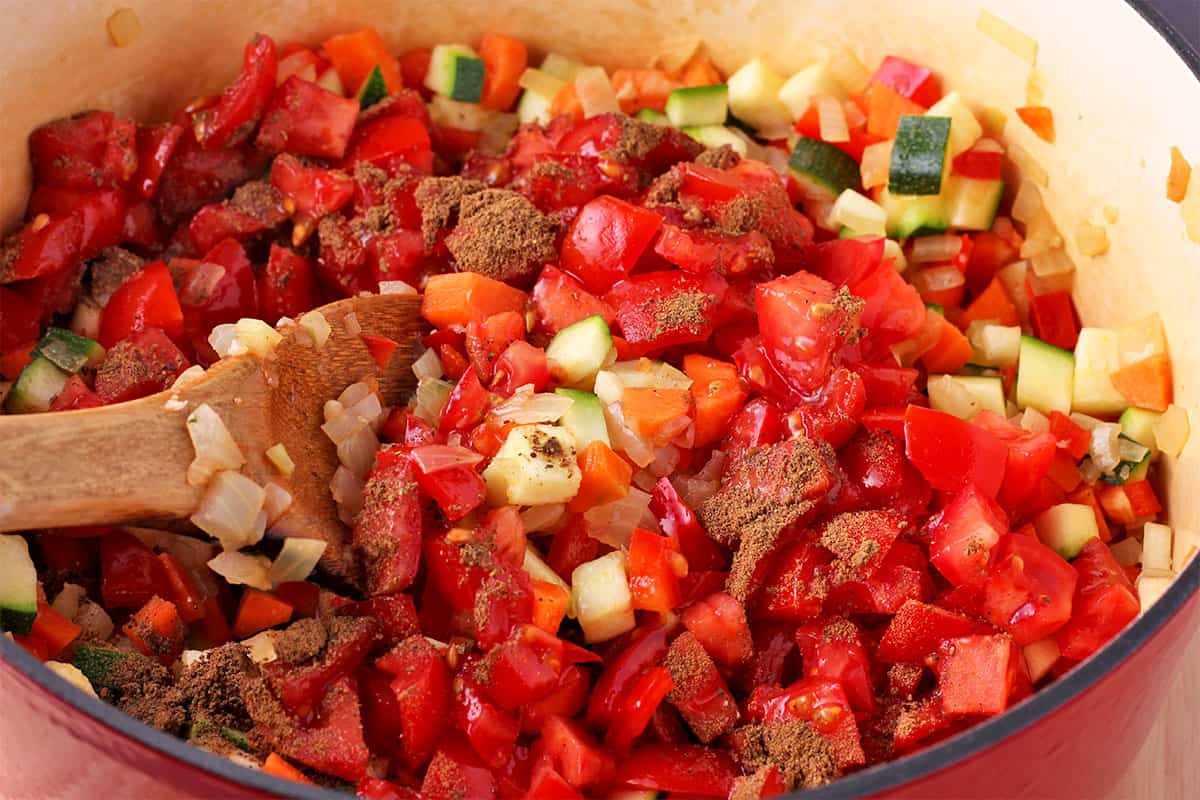
Step 3: Add the tomatoes and 1 teaspoon of baharat. Simmer the tomatoes on low heat for 5 minutes.
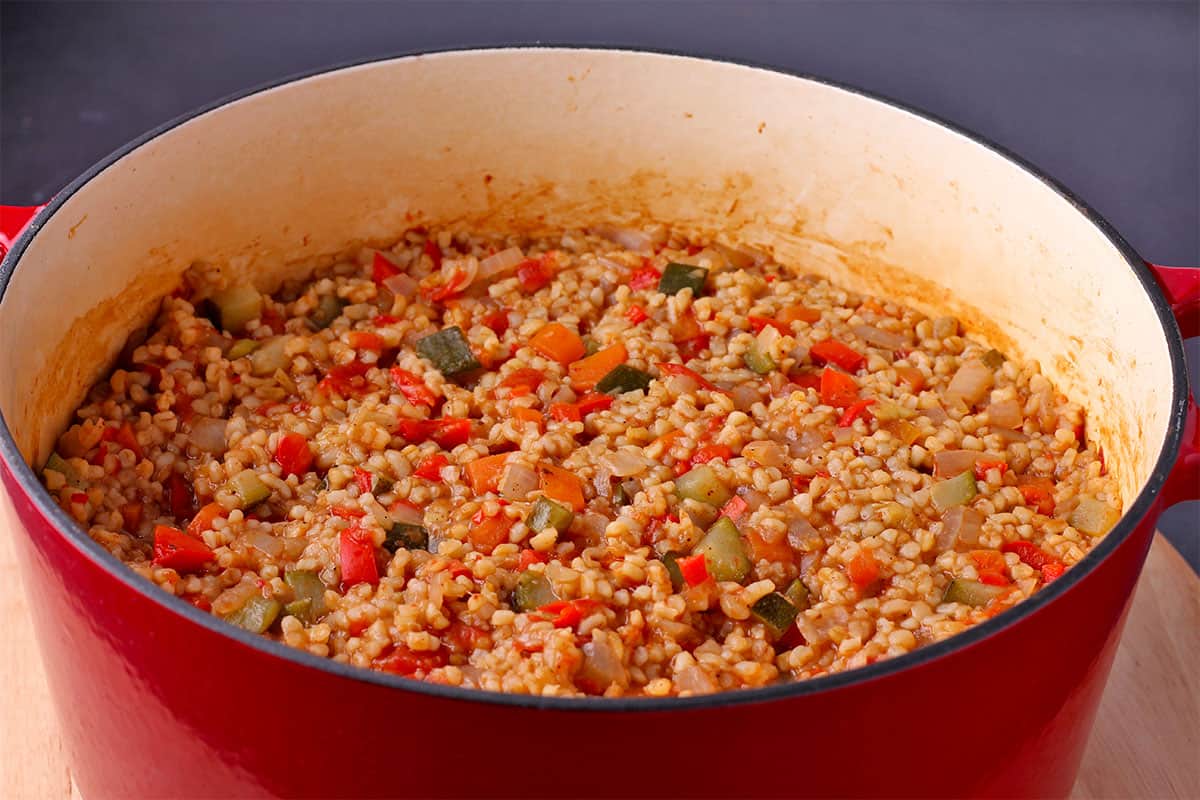
Step 4: Add the bulgur and broth. Stir the bottom of the pot to deglaze. Bring the ingredients to a boil, then reduce to a simmer. Cover the pot and cook for 10-15 minutes until the liquid is absorbed.
Denise's Pro Tips
- The cooking process is quick. Prep and measure all the ingredients before you start cooking.
- Heat the pot before adding the onions to keep them from sticking. Keep the onions moving as they cook.
Serving Suggestions
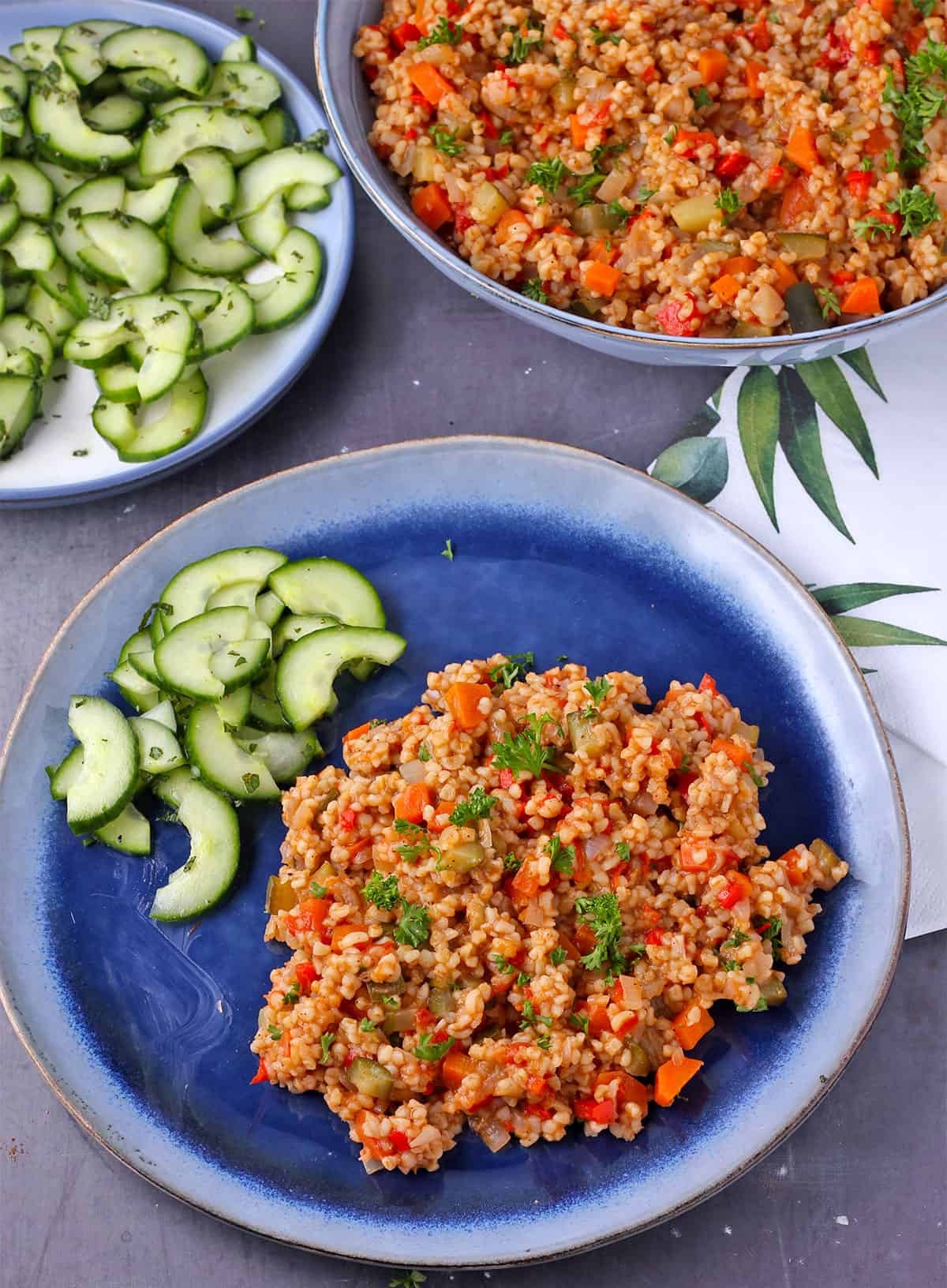
Garnish bulgur pilaf with fresh herbs like parsley or fresh mint. Sliced green onions or lemon slices also complement this dish.
Frequently Asked Questions
Store leftover bulgur pilaf in an airtight container for 4 days. You can also freeze it for 3 months.
My favorite way to reheat bulgur pilaf is to steam it. Place a steamer basket in a medium pan and water without covering the basket. Add leftover pilaf, cover the pot, and over medium-high heat, boil the water and steam the bulgur for 5 minutes until it is heated through. The microwave is another easy method. If you reheat bulgur in a pan on the stove, add a little broth or water so the bulgur doesn't stick to the bottom of the pan.
Bulgur is made from whole wheat and is not gluten-free. The best gluten-free substitute for bulgur pilaf is quinoa because it requires the same amount of liquid and cooks in 15 minutes.
More Vegan Pilaf Recipes
Do you have a question or recipe request or need a cooking tip? Leave a comment below or contact Denise. I’m here to help! If you want more healthy vegan recipes, please subscribe to my newsletter or follow me on Facebook or Pinterest for the latest updates.
If you make this recipe, please leave a ⭐⭐⭐⭐⭐ rating. It’s much appreciated!
👩🏻🍳 Recipe
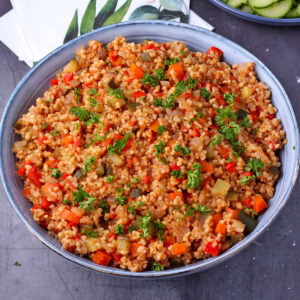
Middle Eastern Vegetable Bulgur Pilaf
Rate this Recipe:
Ingredients
- 1 large onion - diced
- 3 cloves garlic - minced or pressed
- 4 medium carrots - diced (about 2 cups)
- 1 medium zucchini - (courgette), diced
- 1 medium red pepper - diced
- 4 medium tomatoes - 2 cups diced
- 1 -2 teaspoons Baharat spice blend - see notes
- 2 cups bulgur - medium or coarse
- 4 cups vegetable broth - or water
- 1 teaspoon salt
- ¼ cup parsley - chopped, for garnish
Instructions
- Heat a medium pot or Dutch oven to medium heat. Add the onions and cook them for 2-3 minutes to soften.
- Add the garlic and stir for another 30 seconds.
- Mix in the carrots, zucchini, and red pepper. Continue cooking the veggies for another 5 minutes, stirring them frequently.
- Stir in the tomatoes and 1 teaspoon of Baharat. Cook on low heat for another 5 minutes until the tomatoes break down.
- Add the rinsed bulgur and the 4 cups of vegetable broth. Bring the mixture to a boil, then reduce the heat to a simmer. Cover the pot and simmer for 10-15 minutes until the liquid is absorbed.
- Taste the bulgur with vegetables and add more of the spice mix and salt (if using).
- Garnish with chopped parsley if desired.
Notes
- Please see the blog post for a homemade Baharat spice recipe.
- The best gluten-free substitute for bulgur is quinoa. Use the same amount (2 cups) and 4 cups of broth. It will take about 15 minutes for the liquid to absorb.
- You can substitute with a can of diced tomatoes, although the tomato flavor will be more pronounced.
- Store leftover bulgur pilaf in an airtight container for 4 days. You can also freeze it for 3 months.
Nutrition
Nutritional information is an estimation only.


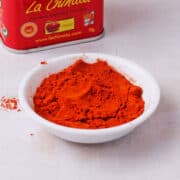
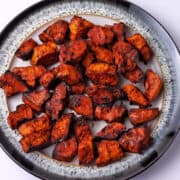
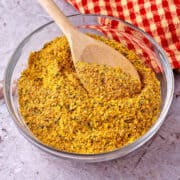
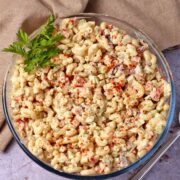
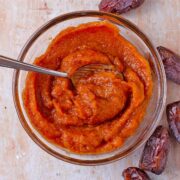
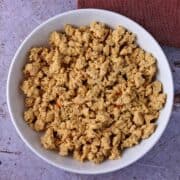
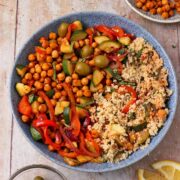
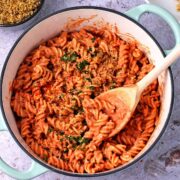
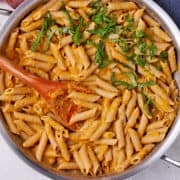
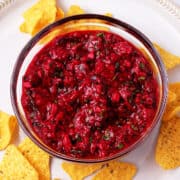
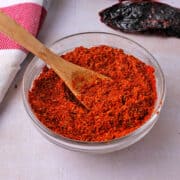

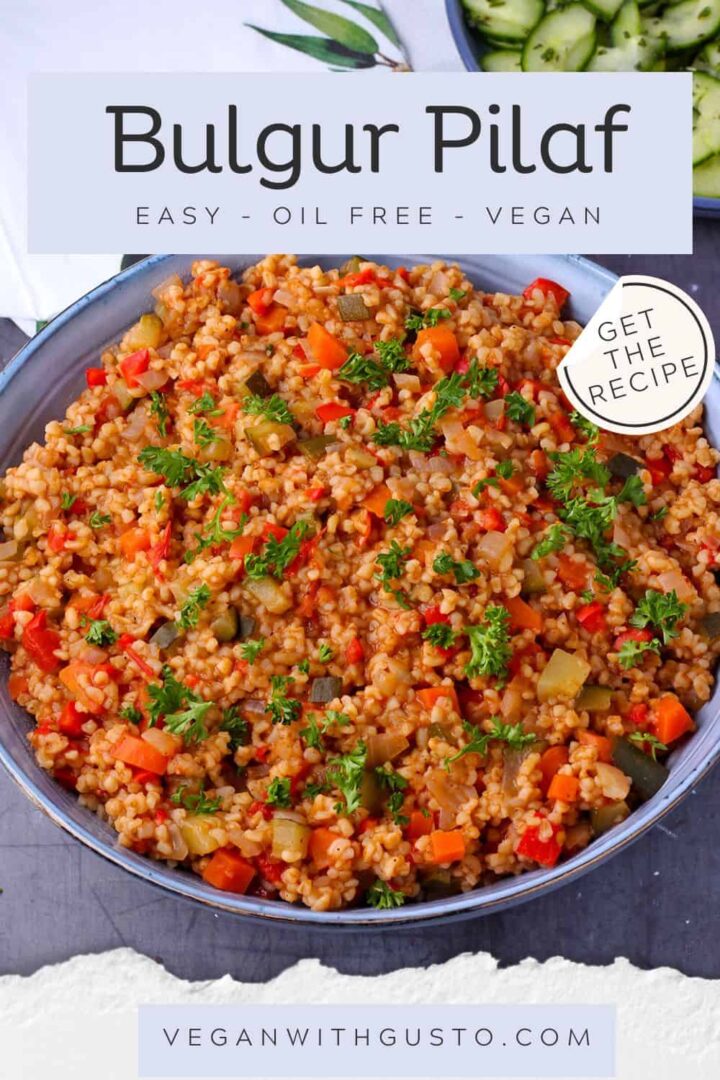
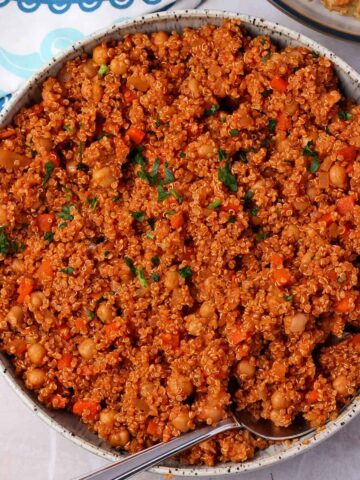
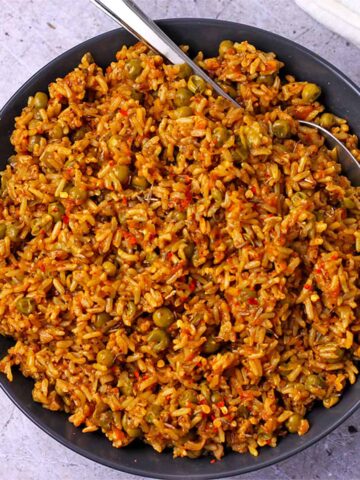
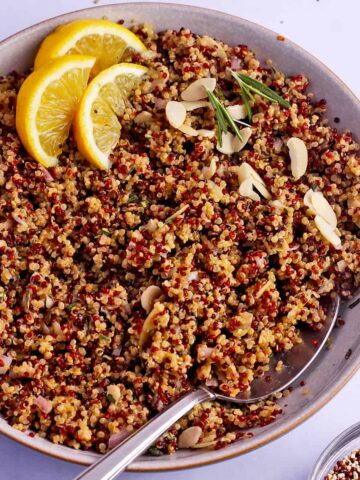
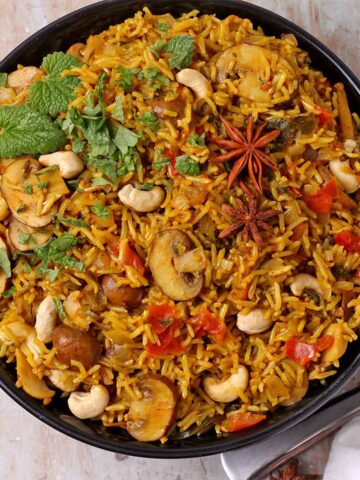
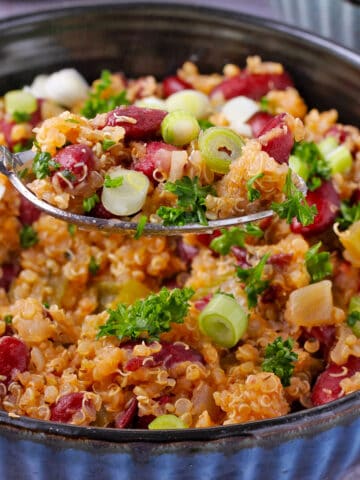
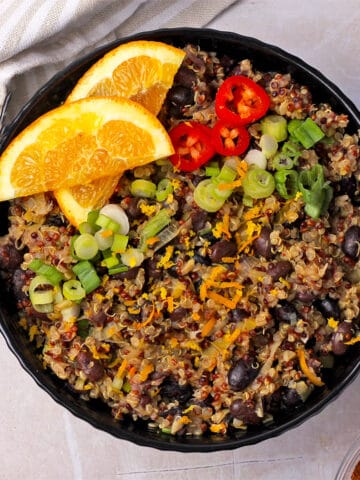
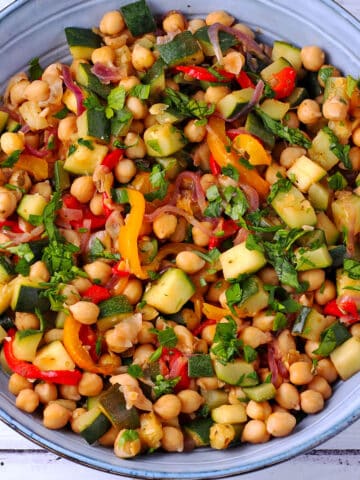
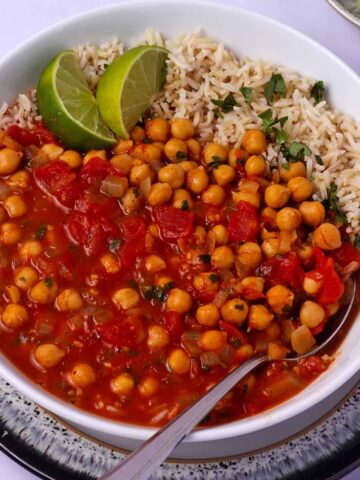
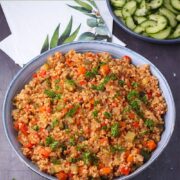

Leave a Reply